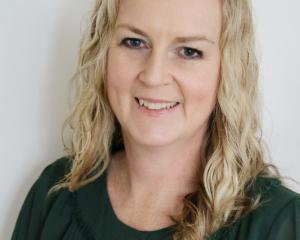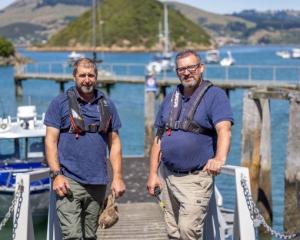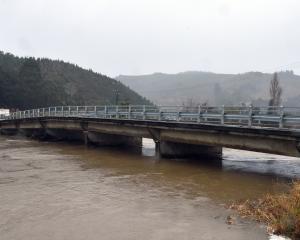Limiting the application of nitrogen in fruitgrowing areas of the Teviot Valley will threaten the sustainability of horticulture and affect up to 1000 jobs, an Otago Regional Council hearing panel was told in Alexandra yesterday.
Mark Darling, of the Ettrick Fruitgrowers Association, said there were 450ha of orchards around the Teviot area.
Tighter restrictions on the discharge of nitrogen from land to groundwater, proposed in the council's plan change 6A, would restrict new plantings and current crop loading on mature trees and reduce the viability of land for horticulture, he said.
The aim of the plan change is to maintain and improve water quality. The area around the Ettrick aquifer is one of three areas deemed to be "more sensitive" and has a proposed limit of 10kg of nitrogen per hectare of land per year, on average, going into the groundwater.
"That would conflict with what we're doing and severely impact on orchardists," Mr Darling said.
"We all know the economic impact of horticulture to this district and nationally."
Panel chairman Duncan Butcher said the council was "interested in how much nitrogen is not getting used and ends up in the aquifer.
"It's only when the council perceives there to be a problem with nitrogen that it will ask people to do the tests and get the information about it."
Cr David Shepherd said the plan was not to "dictate to you how much to put on but to be mindful of how much is going into the waterway."
Earlier in the day, submitter Peter Dymock, a director of Paterson Pitts Partners, said two matters of particular concern were the discharge of sediment from disturbed land and the construction of crossings over waterways.
The discharge of silt was usually a one-off short-term event with no significant ongoing or long-term environmental effect, he said.
The proposed limits for discharge of sediment were "simply impossible to comply with" as well as being difficult to measure.
If this rule was adopted it would "spell the end of most land subdivision and development in Otago", Mr Dymock said.
It was a misconception that this plan change only affected the rural community, as the two items of concern he had highlighted would affect all land developers and subdividers, rural and urban.
Lawyer John Williamson spoke on behalf of the Otago Water Resource Users Group, which he said represented " a significant number" of the Central Otago irrigation schemes.
The group wanted to ensure the plan changes would not prevent irrigation schemes from operating because the water discharged by schemes contained contaminants present in the natural water inflows, or floatable material blown into the water races.
Under the proposed rules the discharge of discoloured water was prohibited unless it cleared within a certain timeframe. That would prevent the effective functioning of some Central Otago irrigation schemes, he said.
Day 10
Where: Alexandra.
Panel: Crs Duncan Butcher (chairman), and David Shepherd and independent member Clive Geddes.
Proposal: Changes to Otago's water regulations to prevent runoff in rural areas polluting the region's waterways.
Submitters: Dawn Sangster (Glenayr Ltd), John Williamson (Otago Water Users Resource Group), Mary Flannery (Kawarau Station), Peter Dymock (Paterson Pitts Partners), Mike Paterson (Teviotdowns Ltd), John Mulholland (Auripo Enterprises Ltd), Graye Shattky (Central Otago Environmental Society), Glen McDonald (Snowline Ltd), Patrick McGettigan, Geoff Crutchley, Gerald Dowling (Hawkdun Idaburn Irrigation Company) and Mark Darling and Peter Vernon (Ettrick Fruitgrowers Association).
Quote of day: "There was a time when I enjoyed fishing in the Waimea Stream, a tributary of the Mataura River. Some of that pleasure has been removed when even the mud on its banks smells like a dairy shed." - Patrick McGettigan.












